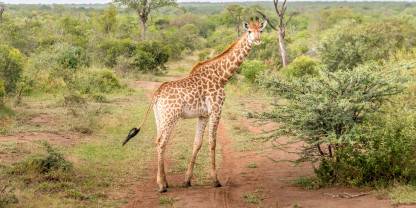Average Expert Rating
Rating Breakdown
Write a User ReviewBastion of the black rhino
But far being a place of doom and gloom, Mkhaya – named after the prolific knob thorns that dominate the reserve – is the silver lining to the dark cloud that represents Africa’s current rhino woes. Amid tight security and under the watchful eye of a world-class anti-poaching unit, black and white rhinos are visibly thriving, along with a wide variety of endangered Lowveld wildlife species, such as sable, roan and tsessebe.
The top safari activity at Mkhaya is on-foot rhino tracking, with some seriously close
Read more
encounters with these critically endangered prehistoric beasts. The high density and approachability of Mkhaya’s rhino enable visitors to get up-close and personal with the animals. It’s an intimate, heart-pounding experience that you certainly won’t forget in a hurry.Mkhaya differs from the other reserves in the Big Game Parks portfolio in that it does not accommodate self-drive or self-catering visitors. The fully inclusive Stone Camp offers accommodation packages, including game drives in open-top vehicles and guided bush walks, which provide visitors with exceptional opportunities to see both black and white rhino in the wild – an incredibly rare and privileged safari experience today.
Open air lodges, inquisitive visitors
While you can visit on a day tour, if you want to really experience Mkhaya Game Reserve then it’s worth spending a night or two at Stone Camp. Day visitors aren’t allowed here, so it’s particularly peaceful and depending on the season you might even have the whole camp to yourself. Stone Camp is an electricity-free camp with open-air lodges: expect visits from the local wildlife, particularly inquisitive monkeys in search of a treat. While Stone Camp is impressively in tune with nature, the reserve is made up of several former farms and there are numerous gates which the guides have to open to enter different sections. It does take away from the overall wilderness vibe of the park somewhat, but the wildlife viewings – including white rhino and giraffe – quickly make up for it.
Black Rhino Encounters
Mkhaya is also a sanctuary for Livingstone’s eland and the elusive roan antelope, both thriving here under careful management. Guided drives and walks take visitors through a mosaic of acacia thornveld, riverine forest and open glades. With no self-drive access, the reserve maintains an atmosphere of exclusivity.
The heart of the reserve is Stone Camp, a rustic, lantern-lit lodge tucked beneath tall trees along a dry riverbed. Its open-fronted stone cottages blend beautifully into the forest, and it’s common to wake to the sound of branches snapping as nyala or bushbuck wander between the rooms. Crested guineafowl are constant companions here, padding
Read more
confidently along pathways and pausing to inspect passing guests with their comical crests and spotted plumage.Black Rhino Haven
The only way to explore this Lowveld park is with guides, either in open Land Rovers or on foot. I had a rare opportunity to photograph shy black rhino interacting on the fringe of a boisterous herd of sparring white rhino. Population figures are a closely guarded secret but Mkhaya offers one of the best opportunities in Africa for getting up close and about as intimate as you ever can to wild black rhino. Mkhaya boasts a total of 52 large mammals and this is the only place in the country to see buffalo, sable, Livingstone’s eland and tsessebe.
Stone Camp (designed by Ted Reilly

